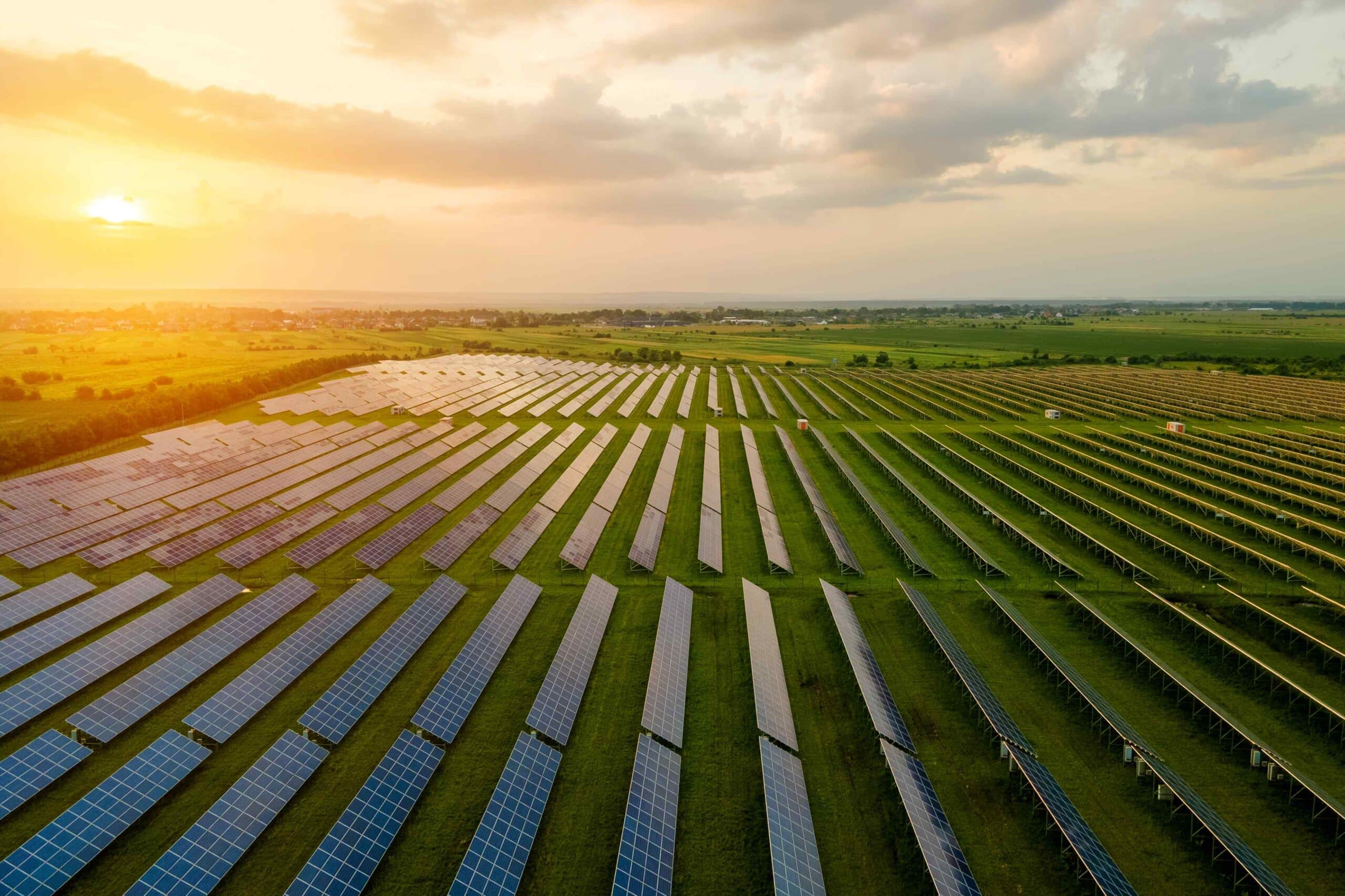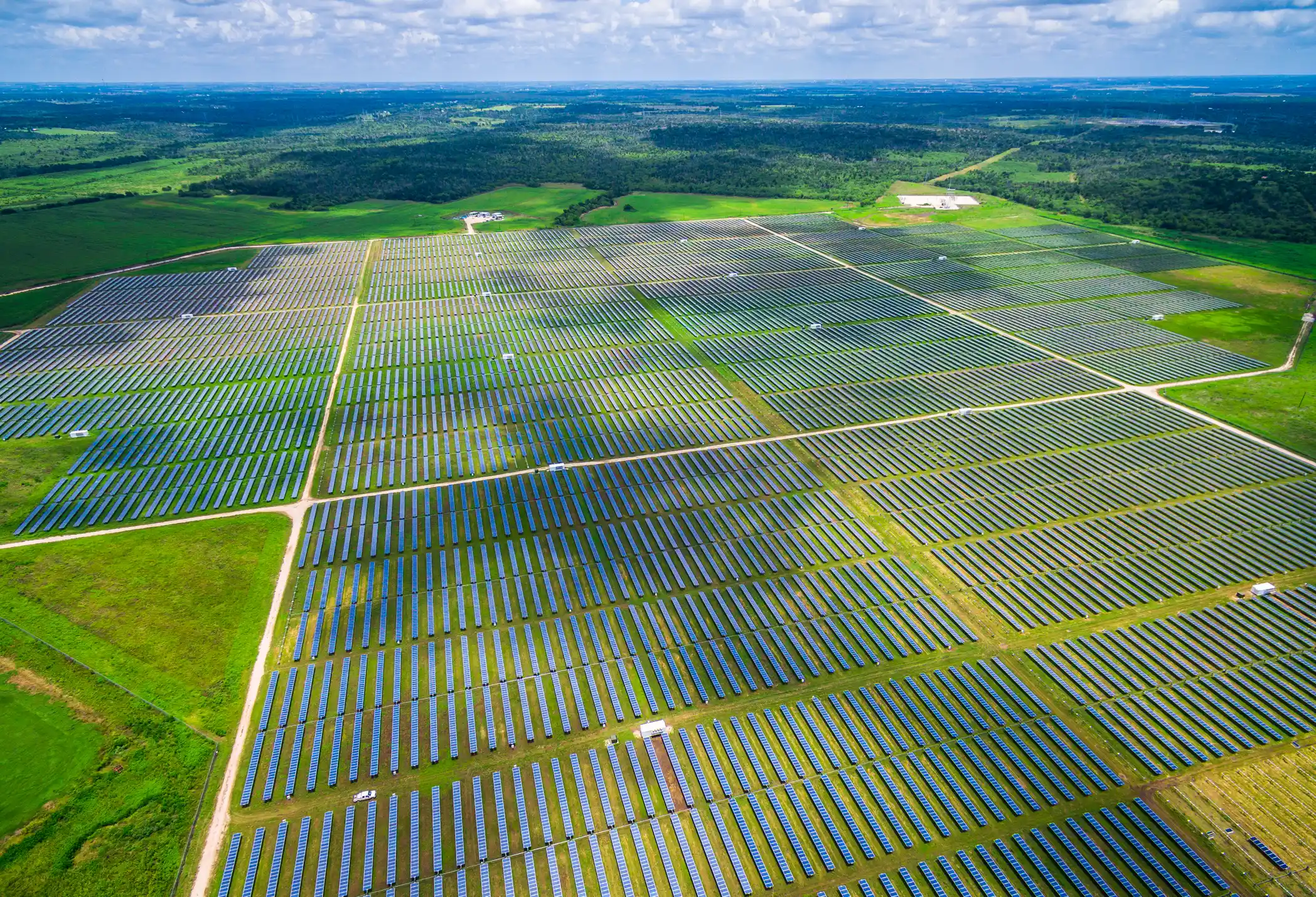POSTED
August 23, 2024
The Economic and Environmental Reasons Coal Is on Its Way Out
Shifts are happening in the global energy landscape. The decreasing consumption of coal for energy and the increasing demand for renewable energy sources are driving these changes. In 2023 alone, the world added 50% more renewable energy capacity than in 2022. Nearly three-quarters of this was solar energy, and the trend isn’t slowing down. Renewable energy capacity is expected to more than double by 2028, driven largely by solar power.

The shift from coal to renewable energy is critical for environmental reasons and the economic rejuvenation of areas historically reliant on coal. This gives investors a unique opportunity. Not only can you take advantage of solar power’s positive momentum, but also help make a positive environmental and social impact with your investment.
The Decline of Coal
The global demand for thermal coal is weakening. This is especially true in traditional markets like Europe and the U.S. One main contributing factor to this decline is the drop in coal prices, making coal mining operations less profitable. For example, forecasts predict a steep decline in Australia’s thermal coal export earnings, dropping from $36 billion in 2023-2024 to $21 billion by 2028-2029.
Investors and insurers are growing reluctant to engage with the coal industry. This retreat is partly due to the increasing cost of insuring coal projects and the higher risks associated with investing in coal due to its environmental impact and declining market viability.
The thermal coal market is also facing operational challenges. Many countries are setting ambitious climate targets that involve reducing or eliminating coal energy production. This means coal projects will require large capital investments to meet new environmental standards. This regulatory environment is making it difficult for new coal projects to get started. Existing operations are also being phased out in favor of cleaner alternatives.
In the U.S., there has been a rapid decline in coal usage. By 2030, coal capacity in the U.S. is projected to be halved, falling from 318 gigawatts (GW) in 2011 to 116 gigawatts (GW). This trend reflects the aging of coal plants and increasing operation and maintenance costs. The growing competitiveness of renewable energy, specifically solar power, is further accelerating the decline of coal.
The Rise of Solar Energy

Recent developments in utility-scale solar power have made it a more viable and attractive energy source. For instance, the levelized cost of energy (LCOE) for solar power has decreased significantly, making it cheaper than coal. Unsubsidized utility-scale solar projects can have an LCOE as low as $29-$38 per megawatt hour (MWh). This is competitive with or even lower than coal’s LCOE, which ranges from $69-$169 per MWh.
Solar power also benefits from lower operational and maintenance costs when compared to coal. Most utility-scale solar installations do not require the ongoing expense of fuel procurement, fuel transportation, and emissions management.
In many cases, solar’s scalability and flexibility make it a better option than coal. Solar installations can be deployed faster than coal-fired plants and in a modular fashion. This flexibility is crucial for adapting to changing demand patterns without the lengthy construction and regulatory approvals required for coal plants.
Coal is a finite resource that will run out. It also can be located in politically or economically unstable areas, making it logistically difficult to import. Solar energy, by contrast, only needs sunlight which is abundant and available worldwide. Solar power is more scalable and less subject to geopolitical and logistical constraints.
Legislative Tailwinds
Domestic legislation is helping to drive the adoption and viability of utility-scale solar power. Signed into law on August 16, 2022, the Inflation Reduction Act (IRA) includes a variety of incentives specifically designed to promote solar energy projects. For example, the act extends the Solar Investment Tax Credit at 30% for projects that start construction by the end of 2032.
The IRA also introduced the Production Tax Credit (PTC) for solar power. The PTC provides a base rate of $0.0275 per kilowatt hour (kWh) for electricity produced from qualified solar facilities. This credit is particularly valuable for larger utility-scale solar installations.
The IRA introduced additional bonus credits to encourage the deployment of clean energy projects in underserved communities. The Energy Community Tax Credit applies a bonus of up to 10% for production tax credits or 10 percentage points for investment tax credits for projects, facilities, and technologies located in energy communities. It also offers a 20% bonus for projects directly benefitting low-income residential buildings or economic benefit projects.
These incentives help lower the upfront costs associated with solar projects and aim to bolster wider adoption of solar energy across various sectors and communities.
Economic Opportunities for Investors

Investing in utility-scale solar projects can present a unique opportunity for investors, amplified by current energy policies and market trends. First and foremost, these projects often offer attractive financial returns due to their scale and efficiency.
Investors can also benefit from the ITC, reducing the upfront capital required and improving the overall financial returns. Investing in renewable energy projects like utility-scale solar also aligns with the growing focus of Environmental, Social, Governance (ESG) criteria.
Shasta Power can help qualified investors take advantage of this opportunity. We help you invest in utility-scale solar projects through solar investment funds like the Summit Power Fund.
Environmental and Social Impact
Solar power is better for the environment and more sustainable than coal. The life cycle emissions of solar power, including manufacturing, installation, and decommissioning, is approximately 95 pounds per megawatt hour (MWh). Comparatively, life cycle emissions from a coal power plant are around 2,000 pounds per MWh. What’s more, solar panels offset their lifecycle emissions within 2 to 3 years of operations. After this payback period, they continue reducing carbon emissions without adding any more greenhouse gasses to the atmosphere.
Utility-scale solar projects can also benefit local communities through job creation and economic revitalization. This is especially important for communities that have historically relied on coal to drive their economies. Here are a few examples of how solar projects can help rejuvenate local communities.
The Sherco Solar Project
Located near the existing Sherco coal plant in Becker, Minnesota, this utility-scale solar project represents a major shift toward renewable energy. Once complete, it is set to be one of the largest solar projects in the United States, with a capacity of 710 megawatts (MW). To date, the project has created nearly 400 union construction jobs. It will also provide economic benefits through payments to landowners and increased local taxes. All told, the projects will contribute approximately $350 million to the local economy.
The Mineral Basin Solar Project
Located in Clearfield County, Pennsylvania, the Mineral Basin Solar Project is transforming nearly 2,700 acres of former coal mining land to support what will be the largest solar project in the state. The project is expected to create more than 750 construction jobs and provide ongoing economic benefits through substantial annual tax revenues to local townships.
Coal power is declining, and for good reason. The cost of mining coal is increasing and countries are developing more regulatory constrictions on it. As coal continues to decline, solar power is here to take its place. Thanks to favorable market conditions and advantageous legislation, utility-scale solar projects are more economically viable than ever. They also help lower carbon emissions and can help revitalize communities impacted by the decrease in coal power productions. For investors, this is a great opportunity to take advantage of the rise of solar power. Solar investment funds give you the chance to make the most of your investment, helping to create a sustainable future for us all.
At Shasta Power, we help investors make a positive environmental and social impact. Visit our investment information page to learn more about our solar projects and investment opportunities.





